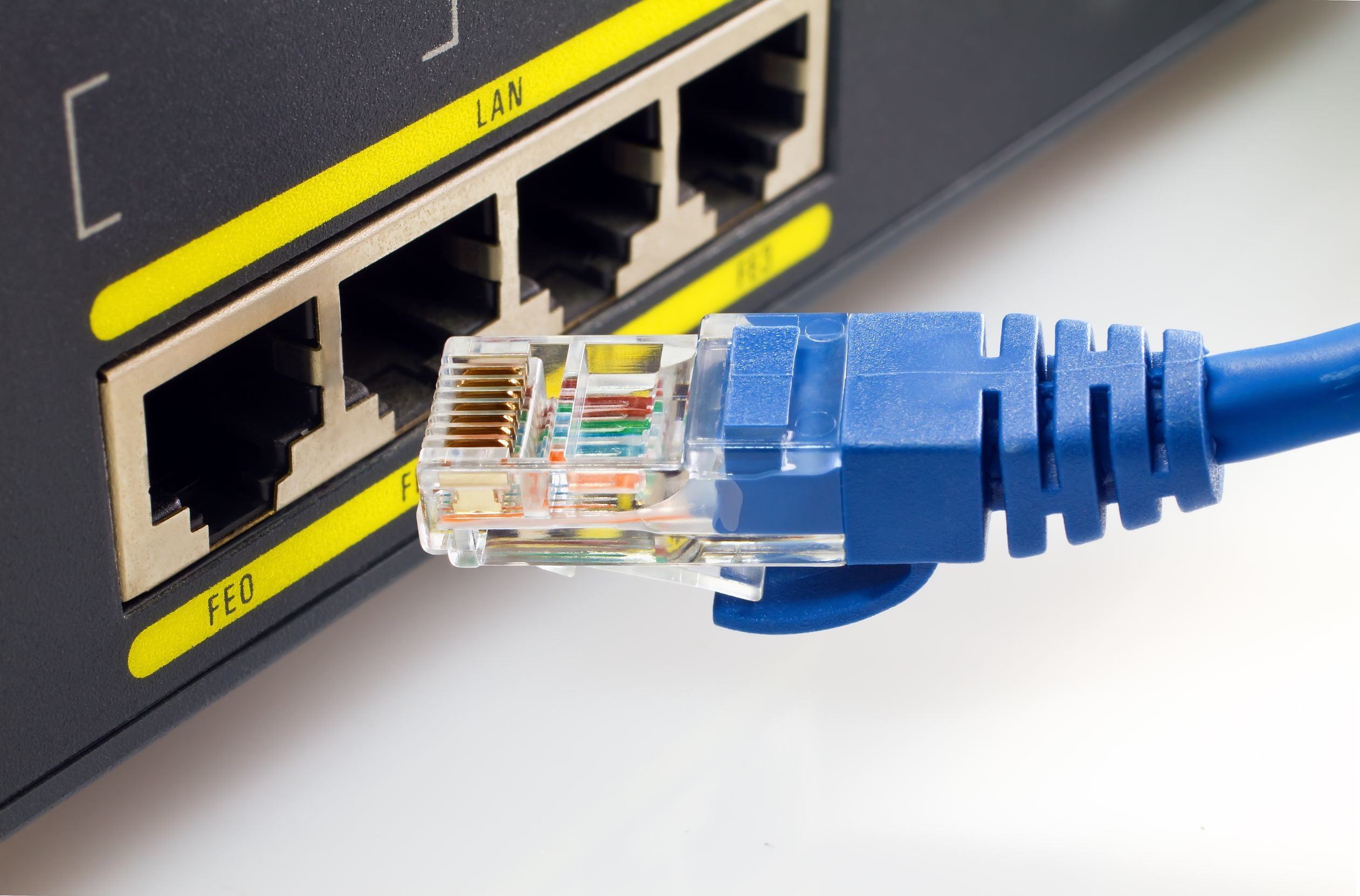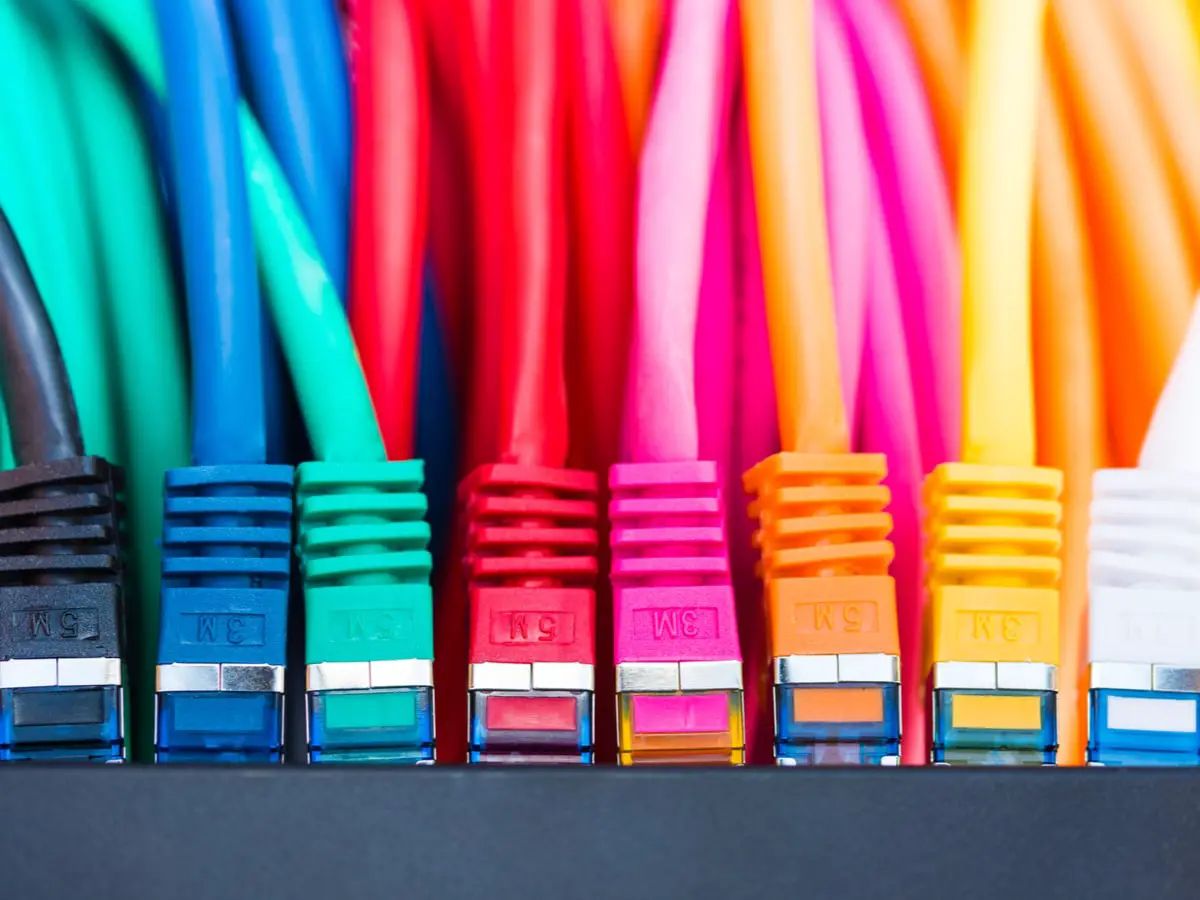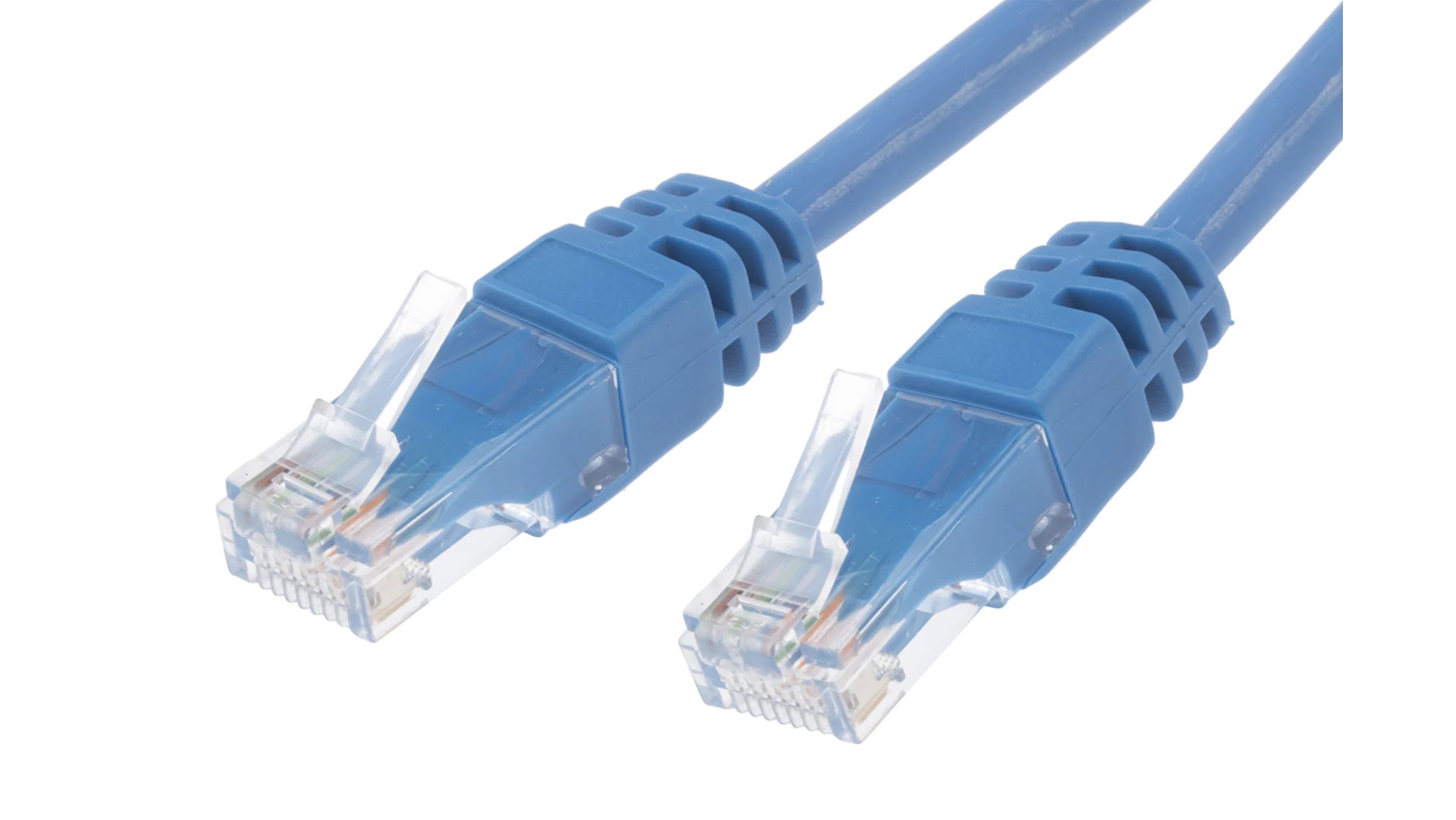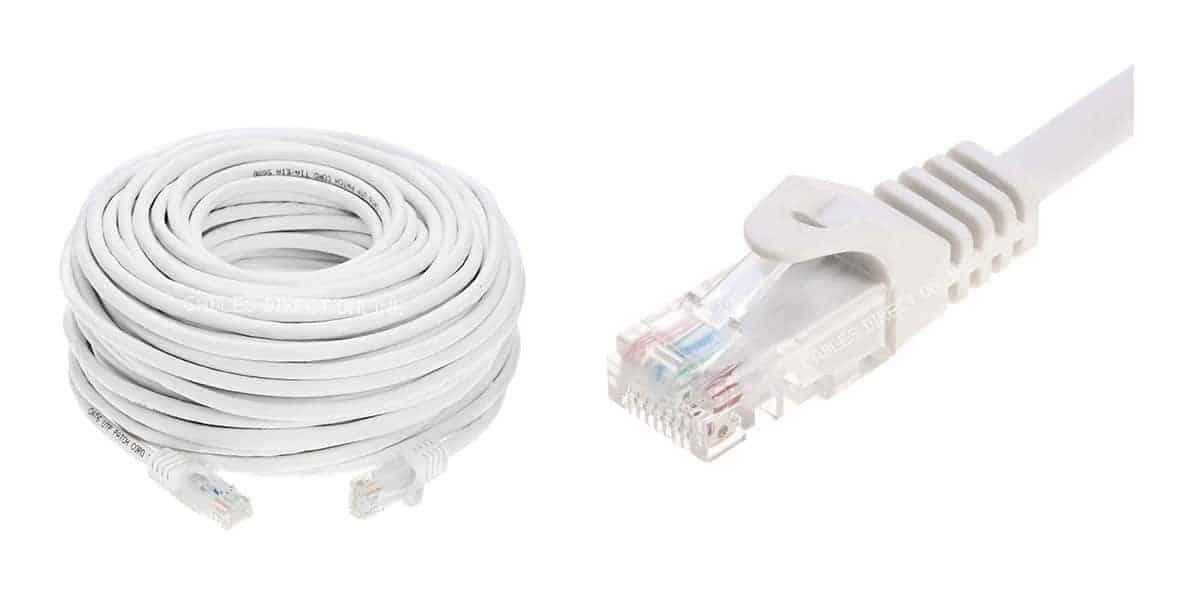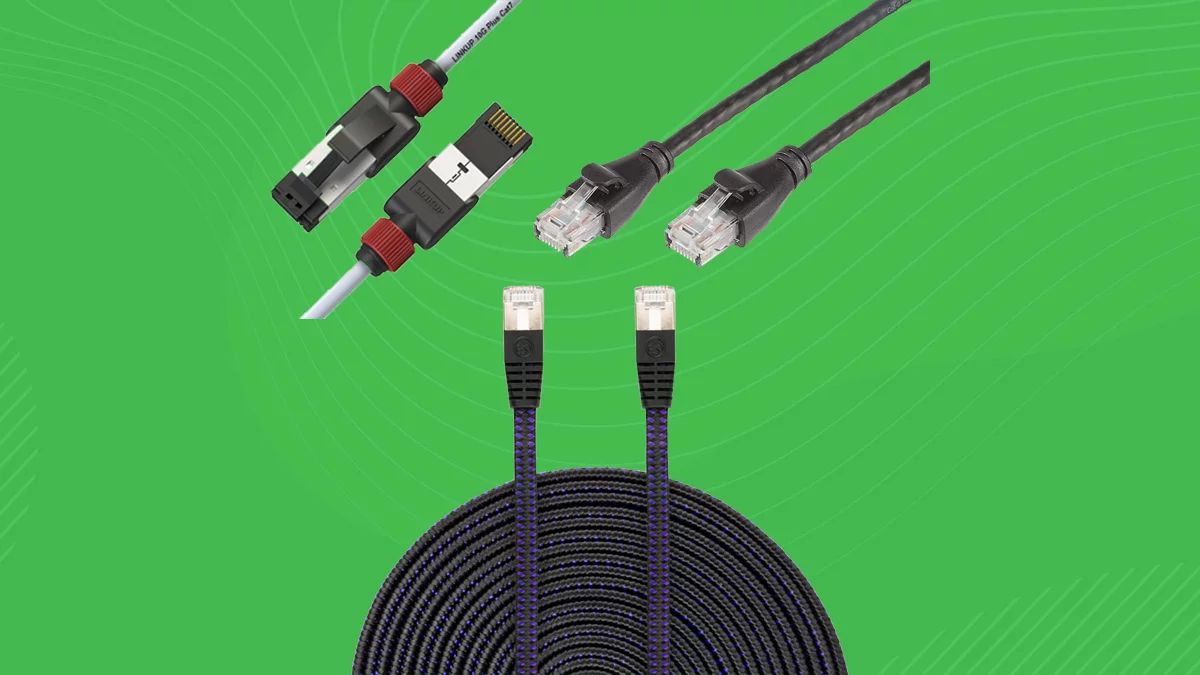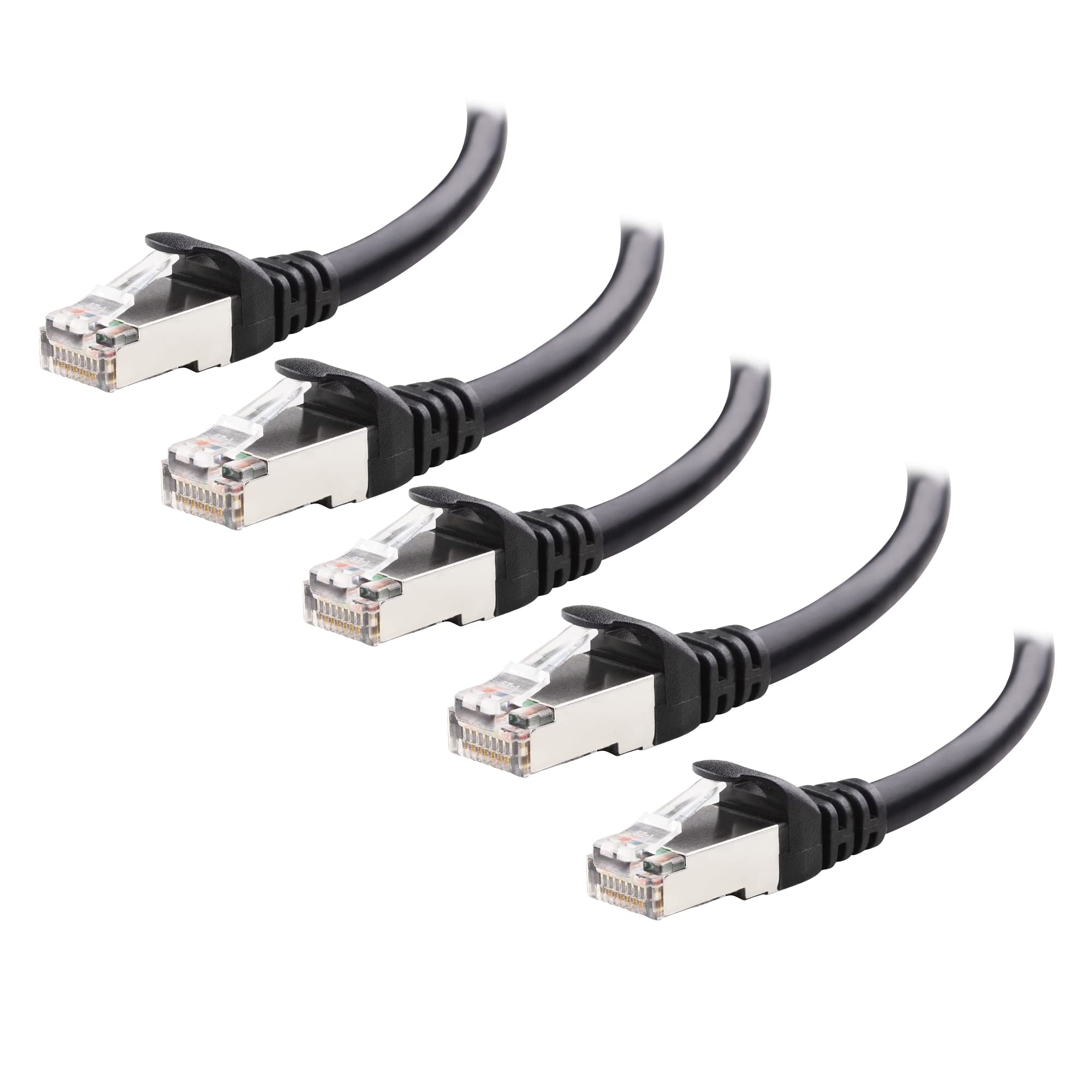Introduction
Welcome to the world of Ethernet cables! In today’s modern age, where connectivity is king, having a reliable and high-speed internet connection is crucial. And at the heart of it all is the Ethernet cable—a vital component that facilitates the transfer of data between devices. Whether you’re setting up a home network, connecting devices in an office, or simply trying to understand how your internet connection works, knowing what an Ethernet cable looks like is essential.
An Ethernet cable, also known as a network cable or LAN cable, is widely used to connect devices within a local area network (LAN). It serves as the physical link between computers, routers, switches, and other network devices. By transmitting data signals through copper wires or optical fibers, Ethernet cables ensure seamless and efficient communication between connected devices.
In this article, we will explore the appearance and various types of Ethernet cables, providing you with a comprehensive understanding of their different features and purposes. Whether you’re a tech enthusiast, a networking professional, or simply someone curious about the world of internet connectivity, this article aims to demystify the world of Ethernet cables and equip you with the knowledge you need.
So, let’s dive into the world of Ethernet cables and unravel the secrets behind these essential connectors!
What is an Ethernet Cable?
An Ethernet cable, sometimes referred to as a network cable or LAN cable, is a type of cable used to connect devices within a local area network (LAN). It serves as the physical link that enables data transfer between devices such as computers, routers, switches, and other networking equipment.
Ethernet cables are specifically designed to transmit data signals using either copper wires or optical fibers. These cables follow a standardized set of protocols known as the Ethernet standards, which dictate how data is transmitted and received over the network.
Ethernet cables provide a reliable and efficient means of transmitting data over short distances. They are widely used in both residential and commercial settings, whether it’s setting up a home network, connecting computers in an office environment, or establishing a large-scale enterprise network.
One of the key advantages of Ethernet cables is their ability to provide high-speed data transfer. The capabilities of Ethernet cables have evolved over time, with newer iterations offering faster speeds, increased bandwidth, and improved performance. This makes them ideal for activities that require large data transfers, such as online gaming, video streaming, file sharing, and accessing cloud-based applications.
Furthermore, Ethernet cables offer a more stable and consistent connection compared to wireless networks. While Wi-Fi is convenient and popular, it can be susceptible to interference and signal degradation, especially in crowded areas or buildings with thick walls. Ethernet cables, on the other hand, provide a direct, physical connection that ensures reliable data transmission without the risk of signal disruptions.
Overall, Ethernet cables play a crucial role in establishing and maintaining a reliable network connection. They provide a secure and efficient means of transferring data, offering stability and high-speed capabilities that are essential for modern digital communication.
How Does an Ethernet Cable Look Like?
An Ethernet cable typically consists of a cylindrical-shaped body with connectors on both ends. The cable itself is made up of multiple wires that are encased in a protective outer sheath. The appearance of an Ethernet cable can vary depending on the type and category of the cable. Let’s take a closer look at the common design aspects of an Ethernet cable:
Connectors: The ends of an Ethernet cable are equipped with connectors that allow for easy attachment to devices. The most common type of connector used in Ethernet cables is the Registered Jack (RJ) connector, specifically the RJ-45 connector. It consists of a plastic body with several metal pins that align with corresponding slots on the device. These connectors are designed to provide a secure and reliable connection with minimal signal loss.
Cable Body: The cable itself is typically long and flexible, allowing for easy routing and connection between devices. The body of the cable is often covered with a protective outer sheath that shields the internal wires from physical damage and provides insulation. The sheath is usually made of durable materials such as PVC (Polyvinyl Chloride) or LSZH (Low Smoke Zero Halogen).
Wire Configuration: Inside the cable, you will find a specific configuration of wires that carry the data signals. Ethernet cables typically consist of four twisted pairs of wires, totaling eight individual wires. Each wire is color-coded, usually in pairs, with combinations like green and white, orange and white, blue and white, and brown and white. These pairs of wires are twisted together to minimize interference and provide better signal quality.
Cable Category: Ethernet cables are categorized based on their performance and capabilities. The most common categories include Cat5e, Cat6, and Cat6a. Higher categories generally offer improved speed, bandwidth, and shielding capabilities. The different categories of Ethernet cables can be distinguished by the labeling and color-coding of the wires.
Overall, an Ethernet cable has a distinct appearance that sets it apart from other cable types. Its connectors, cable body, wire configuration, and categorization make it easy to identify and differentiate from other cables. By understanding the physical characteristics of an Ethernet cable, you can ensure proper installation, connection, and optimal performance within your network setup.
Different Types of Ethernet Cables
Ethernet cables come in various types, each designed to meet specific network requirements and support different data transmission speeds. The following are the most common types of Ethernet cables:
1. Cat5e: Cat5e stands for Category 5e and is an enhanced version of Cat5 cables. It supports data transfer speeds of up to 1000 Mbps or 1 Gbps. Cat5e cables are commonly used for home networks, small businesses, and general networking needs. They are affordable and provide reliable performance for most applications.
2. Cat6: Cat6 cables, also known as Category 6 cables, offer improved performance and higher data transfer rates compared to Cat5e. They can handle speeds of up to 10 Gbps over short distances and are suitable for environments that require high-speed data transmission, such as large offices or data centers. Cat6 cables have more stringent specifications for minimizing crosstalk and provide better overall performance.
3. Cat6a: Cat6a, or Category 6a, cables are an enhanced version of Cat6 cables with even higher data transfer rates. They can support speeds of up to 10 Gbps over longer distances compared to Cat6 cables. Cat6a cables are typically used in professional settings where reliable and high-speed connectivity is crucial, such as in large-scale enterprise networks and server rooms.
4. Cat7: Cat7, or Category 7, cables are designed to support data transfer speeds of up to 10 Gbps or even 40 Gbps for short distances. They are constructed with better shielding to reduce interference and crosstalk. Cat7 cables are commonly used in data centers, server racks, and environments that require excellent transmission performance and reliability.
5. Fiber Optic Cables: While not technically Ethernet cables, fiber optic cables are utilized for high-speed data transmission over long distances. They use optical fibers to transmit data as pulses of light instead of electrical signals. Fiber optic cables offer incredible speed and bandwidth capabilities and are commonly used in networking scenarios that require ultra-fast and reliable connections, such as large-scale data centers and long-distance communication links.
It’s important to choose the right type of Ethernet cable based on your specific network requirements. Consider factors such as desired data transfer speeds, the distance between devices, and the level of interference and crosstalk present in your environment. Selecting the appropriate Ethernet cable ensures optimal performance and reliable connectivity within your network infrastructure.
The Anatomy of an Ethernet Cable
An Ethernet cable consists of several components that work together to enable effective data transmission. Understanding the anatomy of an Ethernet cable will give you insights into its inner workings and help you grasp how it functions within a network. Let’s explore the essential components that make up an Ethernet cable:
1. Conductor Wires: The conductor wires are the core components of an Ethernet cable. They are responsible for carrying the data signals from one device to another. Ethernet cables typically use copper wires, which are efficient conductors of electricity. However, fiber optic cables, which use thin strands of glass or plastic, are also used for transmitting data over longer distances and at higher speeds.
2. Insulation: Surrounding the conductor wires is an insulating material that helps to protect the wires and prevent any electrical interference or signal loss. It ensures that the data signals remain intact and free from disruptions caused by external factors.
3. Shielding: Some Ethernet cables include shielded layers to minimize electromagnetic interference (EMI) and radio frequency interference (RFI) that can negatively impact signal quality. Shielding can help ensure a clean and reliable transmission by reducing noise and disturbances that can occur in environments with high levels of electrical activity.
4. Twisting: Ethernet cables are designed with pairs of wires twisted together. The twisting helps reduce crosstalk, which is the interference that can occur between adjacent wires. The pairs of wires are twisted at different rates, creating distinct patterns that minimize the potential for signal interference.
5. Connectors: At each end of an Ethernet cable, connectors are attached to facilitate easy connection to devices. The most common type of connector used in Ethernet cables is the RJ-45 connector. This small plastic connector has eight pins that align with slots in the device’s network port, providing a secure and reliable connection.
6. Housing: The cable’s housing, often made of durable materials like PVC or LSZH, provides protection and support for the internal components. It helps maintain the integrity of the cable and minimizes the risk of damage during installation or usage.
The combination of these components makes up the anatomy of an Ethernet cable. Each element plays a crucial role in ensuring efficient and reliable data transmission within a network. Whether it is the conductor wires carrying the signals, the insulation protecting the wires, or the connectors facilitating connections, all components work together harmoniously to enable seamless communication between network devices.
How to Identify an Ethernet Cable
Identifying an Ethernet cable is important when setting up or troubleshooting network connections. Here are some key factors to consider when identifying an Ethernet cable:
1. Cable Category: Ethernet cables are classified into different categories based on their performance and capabilities. Look for labels or markings on the cable itself to determine its category. Common categories include Cat5e, Cat6, and Cat6a, each offering varying speeds and capabilities.
2. Connector Type: Ethernet cables generally use RJ-45 connectors, which have eight pins and resemble oversized telephone connectors. RJ-45 connectors are the standard for Ethernet connections, so identifying this type of connector confirms that it is an Ethernet cable.
3. Color Coding: Ethernet cables often follow a specific color coding scheme for their wires. The wires within the cable are usually paired and color-coded. The most common color coding scheme is the T568B, where the wires are paired as follows: white-orange, orange, white-green, blue, white-blue, green, white-brown, and brown. Checking the color coding can help distinguish an Ethernet cable from other types of cables.
4. Cable Markings: Many Ethernet cables have markings printed along their length. These markings may include information such as the manufacturer, cable category, and compliance with industry standards. Checking for these markings can provide valuable clues about the cable’s identity.
5. Cable Length: Ethernet cables come in different lengths depending on the requirements of the network setup. Cables used for typical home or office networks are often shorter, ranging from 1 to 10 meters. Longer cables are commonly used for commercial or industrial networks. Checking the cable length can give you an idea of the intended use of the cable.
6. Cable Sheath Color: While not a definitive indicator, Ethernet cables often have a specific sheath color that can provide a general idea of their category. For example, Cat5e cables typically have a blue sheath, while Cat6 cables often have a yellow or green sheath. However, it’s important to note that cable sheath colors may vary, so it’s best to rely on other identification methods mentioned above.
By considering these factors, you can identify an Ethernet cable with confidence. Knowing the category, connector type, color coding, cable markings, length, and sheath color (if applicable) will help you determine whether a cable is indeed an Ethernet cable and assist you in ensuring the correct setup or troubleshooting of your network connections.
Conclusion
Understanding what an Ethernet cable looks like is essential for anyone working with network connections. Ethernet cables serve as the backbone for connecting devices within a local area network, providing reliable and high-speed data transmission. In this article, we have explored the appearance and various types of Ethernet cables, delving into their physical characteristics and features.
We have learned that Ethernet cables come in different categories, such as Cat5e, Cat6, and Cat6a, each with varying speeds and capabilities. We have also examined the key components that make up an Ethernet cable, including the conductor wires, insulation, shielding, twisting, connectors, and housing.
Furthermore, we discussed how to identify an Ethernet cable by considering factors like cable category, connector type, color coding, cable markings, length, and sheath color (if applicable). These identification methods can assist in proper network setup and troubleshooting.
By grasping the appearance and characteristics of Ethernet cables, you can confidently handle network installations, ensure reliable connections, and maximize data transfer speeds. Whether you are setting up a home network, connecting devices in an office, or troubleshooting network issues, having knowledge of Ethernet cables is crucial for a seamless and efficient network experience.
The world of Ethernet cables is constantly evolving, with new technologies and standards being introduced. It’s important to stay informed and adapt to ensure optimal performance and connectivity within your network infrastructure. Remember, Ethernet cables are the vital link that keeps us connected in this interconnected digital age.







